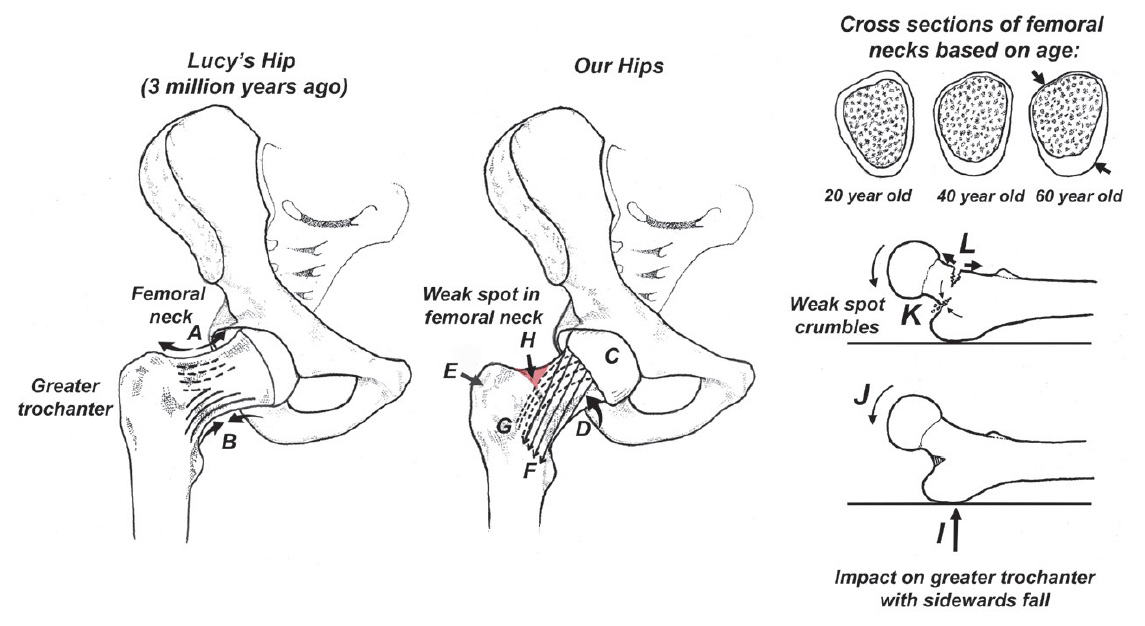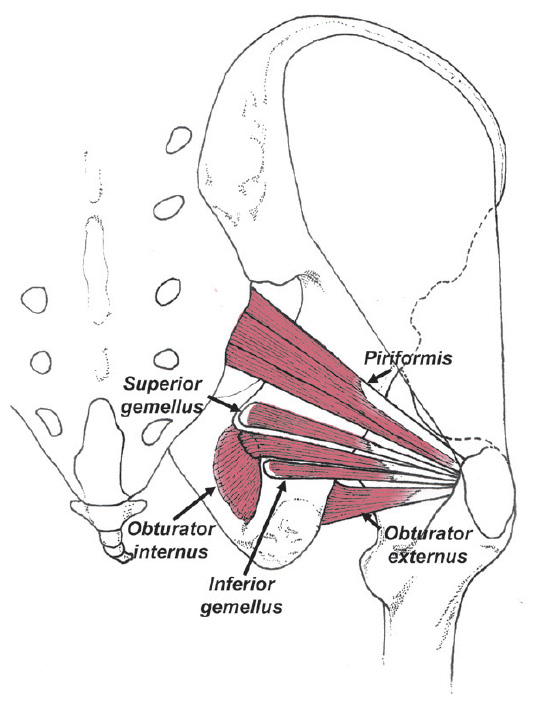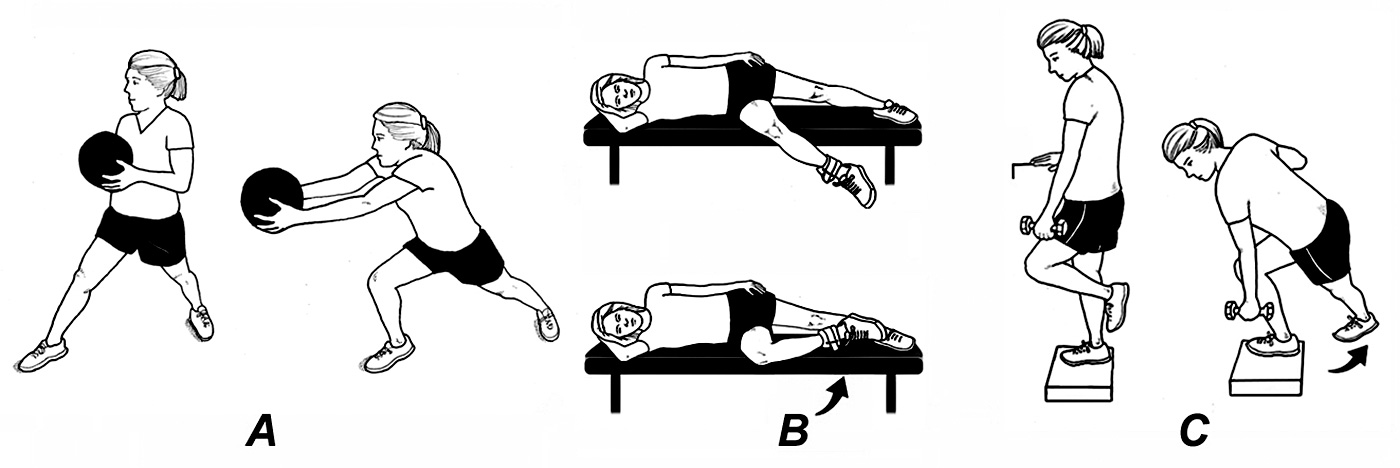New York's highest court of appeals has held that no-fault insurers cannot deny no-fault benefits where they unilaterally determine that a provider has committed misconduct based upon alleged fraudulent conduct. The Court held that this authority belongs solely to state regulators, specifically New York's Board of Regents, which oversees professional licensing and discipline. This follows a similar recent ruling in Florida reported in this publication.
Prevent Hip Fractures by Addressing a Subtle Evolutionary Adaptation
In 2022, 300,000 Americans fractured their hips after falling. The long-term consequences of hip fractures are devastating, as nearly 25% of the people who fracture their hip will be dead in one year, and 50% of them will be unable to return to their prior level of function.1
Although a hip can fracture with a fall in any direction, more than 75% of all hip fractures are the result of a sidewards fall, in which the person stumbles and lands directly on the outer side of their hip.2 Until recently, it’s been unclear as to why lateral falls are so destructive, as people in their 20s do not break their hips when they fall sidewards. In contrast, hip fracture rates increase 100-fold in 60-year-olds and 1,000-fold in 80-year-olds.3
These startling statistics cannot be explained by osteoporosis alone, as hip fractures occur with lateral falls regardless of whether the person is osteoporotic.4
Hip Fractures and Lateral Falls: Evolutionary Adaptations to Bipedality
The mechanism responsible for hip fractures with lateral falls has been elusive until recently. In 2023, Avni, et al.,4 demonstrated that our gradual transition to bipedal locomotion produced significant changes in the shape of our hips: our femoral heads became larger, the femoral necks became more vertical, and there was an increase in the sidewards projection of the greater trochanter. (Fig. 1)
When our ancestors first started walking around on two legs, the weight of the upper body produced significant tensile strain on the upper femoral neck (Fig. 1, A), which was matched by an equal compressive strain on the lower femoral neck (Fig. 1, B). Due to the magnitude of these bending forces, the femoral neck would fracture pretty quickly if our ancestors attempted to walk long distances on a regular basis.
Fortunately, over the past 4 million years, our hips have adapted to the stresses associated with bipedality as our femoral heads became gradually larger (Fig. 1, C), our femoral necks angled more upwardly (Fig. 1, D) and our greater trochanters moved outwardly (Fig. 1, E). While all of these changes made us more efficient bipeds, they changed the pathways of the tensile and compressive forces affecting the femoral neck: the compressive forces now angled downwardly from the top of the femoral head (Fig. 1, F) while tensile forces were angled downward to match the femoral neck angle (Fig. 1, G).
The shift in the location of tensile and compressive forces resulted in the formation of a small region in the upper outer portion of the femoral neck (red area in Fig. 1, H) that is shielded from force while we walk and run. Without exposure to force, this area gradually weakens over time, increasing the likelihood of a fracture. Notice how the upper femoral neck thins out between the ages of 20 and 60, while the lower femoral neck gets thicker (Fig. 1, arrows).
The weak spot in the upper outer portion of the femoral neck creates a dangerous situation in which a lateral fall onto the side of our hip (Fig. 1, I), causes the femoral head to shift downward (Fig. 1, J), which in turn causes the weak spot to buckle under the resultant compressive load (Fig. 1, K). Once this area buckles, the tensile load in the lower femoral neck is drastically increased, causing another fracture (Fig. 1, L).
If the weak spot were not present, the resultant fractures would not occur, explaining why humans are the only mammals to fracture their hips when falling, and why 20-year-olds do not fracture their hips when they fall laterally. Thin older people are especially prone to hip fractures with sidewards falls, as they have less body fat to protect the greater trochanter.

Exercises That Help Build Upper Femoral Neck Strength
The good news is that it may be possible to prevent age-related reductions in the strength of the upper femoral neck by performing specific exercises. In an interesting paper published in The Lancet, Mayhew, et al.,5 claim that it might be possible to improve bone density in the upper femoral neck by performing strengthening exercises while the hips are fully flexed, as unlike walking and running, exercising while your hips are flexed channels forces through the weak spot in our femoral necks.
The authors support their statement by noting that in cultures in which people squat for long periods of time with their hips flexed, like rural China6 and Gambia,7 there is a very low incidence of hip fractures, even with lateral falls, despite a significantly higher prevalence of osteoporosis in these societies.

One possible mechanism is that squatting activates the deep hip external rotators, which attach around the weak spot in the femoral neck. (Fig. 2) It’s been known for decades that when muscles contract, they pull on their bony attachment points with a significant amount of force, which in turn can strengthen that specific spot. It is also possible that these exercises produce a torque on the femoral neck itself, which accelerates bone remodeling.
Either way, strengthening exercises performed against resistance can significantly reduce the rate in which our bone density decreases over time,8 and can even prevent sidewards falls, as hip strengthening exercises have been proven to enhance lateral stability.9
My favorite hip exercises are listed in Figure 3, and it is also possible to strengthen your hips with stationary bike riding, rowing, jumping and/or stairclimbing.5 Because peak bone density occurs while you’re in your early 20s, you should begin these exercises early in life. Even though it is possible to prevent additional bone loss if you start exercising when you’re older, it is difficult to reverse osteoporosis with exercises alone, as it can take decades to appreciably increase bone mineral density with exercise interventions.8

References
- Older Adult Fall Prevention: Facts About Falls. Centers for Disease Control and Prevention.
- Parkkari J, Kannus P, Palvanen M, Natri A, et al. Majority of hip fractures occur as a result of a fall and impact on the greater trochanter of the femur: a prospective controlled hip fracture study with 206 consecutive patients. Calc Tissue Int, 1999 Sep;65:183-7.
- Melton III L. A “Gompertzian” view of osteoporosis. Calcif Tissue Int, 1990;46:285-86.
- Avni H, Shvalb N, Pokhojaev A, et al. Evolutionary roots of the risk of hip fracture in humans. Comm Biol, 2023 Mar 17;6:283.
- Mayhew P, Thomas C, Clement J, et al. Relation between age, femoral neck cortical stability, and hip fracture risk. Lancet, 2005 Jul 9;366(9480):129-35.
- Yan L, Prentice A, Wang X, Golden M. Epidemiological study of hip fracture in Shenyang, People’s Republic of China. Bone, 1999;151-55.
- Aspray T, Prentice A, Cole T, et al. Low bone mineral content is common but osteoporotic fractures are rare in elderly rural Gambian women. J Bone Miner Res, 1996;11:1019–25.
- Snow C, Shaw J, Winters K, Witzke K. Long-term exercise using weighted vests prevents hip bone loss in postmenopausal women. The Journals of Gerontology Series A: Biol Sci and Med Sci, 2000 Sep 1;55(9):M489-91.
- Shaw J, Snow C. Weighted vest exercise improves indices of fall risk in older women. The Journals of Gerontology Series A: Biol Sci and Med Sci, 1998 Jan 1;53:M53-8.



